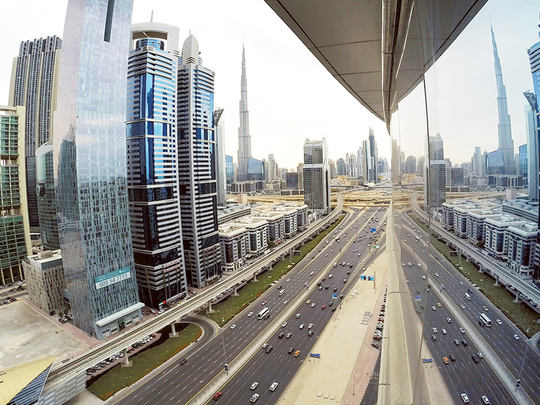
Dubai: Apart from local factors such as demand-supply mismatch and weak mortgage lending support, Dubai’s real estate has an external concern it is having to deal with — the dollar. The Eurozone’s version of the quantitative easing programme, which is now running, and the US Federal Reserve finally getting started with rate hikes could ‘maintain US dollar strength and temper investment demand for Dubai property in the short to medium term’, a report by Phidar Advisory, issued on Monday, warns.
In fact, the dollar’s resurgence was felt during the first quarter, Phidar contends. “In Q1-15, midpoint exchange rates for all currencies included in the REIDI [real estate international demand index and one created by Phidar] are down against the dollar, both quarter-on-quarter and year-on-year, except the Pakistani rupee and Hong Kong dollar.
“Approximately 55-70 per cent of Dubai’s economy is susceptible to dollar strength and, if job growth slows, so does residential demand growth.
“There are reports of company closures and job cuts, but primarily in oil and gas related companies. There are additional reports of slowed expansion and job cuts in other industries, especially for high income earners. However, thus far, the trend appears marginal.”
How the dollar fares in the near term — or more precisely the extent of its strength — will have a bearing on how comfortable overseas investors will be. And even on those UAE/Gulf based investors who generate much of their investable income from outside. (Also, if the Iranian deal is secured and sanctions scaled back, the dollar’s strength could be a steep hurdle for Iranian investors to get into Dubai’s realty space now.)
In the last few weeks, there has been a stream of off-plan launches, the majority of them targeted at the mid-market buyer. It is unclear whether this is more a coincidence than a case of developers biding their time to launch premium projects at a time when international investors are still uncertain about what to do. “The strong dollar continues to hit Dubai property prices, but apartment transaction volumes remain resilient,” said Jesse Downs, Managing Director of Phidar Advisory. “The market downturn is attracting selective opportunistic investment.”
A lesson for local developers from all this is to pull out all stops in chasing after the end-user than set sights on the distant investor.
“With transactional activity in the market down approximately 30 per cent on a year-on-year basis, it’s evident the speculative froth is out of the market and clearly in favour of end-users,” said Sameer Lakhani, Managing Director of Global Capital Partners. “This dynamic is expected to continue — in broad terms — through the year, with external factors such as the continued dollar strength feeding in as well.”
In a departure from other recent Dubai real estate analysis — which talks about upcoming supply suppressing price increases — Phidar’s report contends that new stock releases will not be ‘massive’. (Most reports suggest residential handovers could be well above the 30,000 unit mark over the next 12-18 months.) In contrast, Phidar’s report suggests: “Over the next three years, supply is projected to expand at an annual average of 4.3 per cent. In contrast, between 2008 and 2011, supply expanded at an annual average rate of 12.5 per cent.
“Unlike the last cycle, now the main threat is the strong dollar.”











